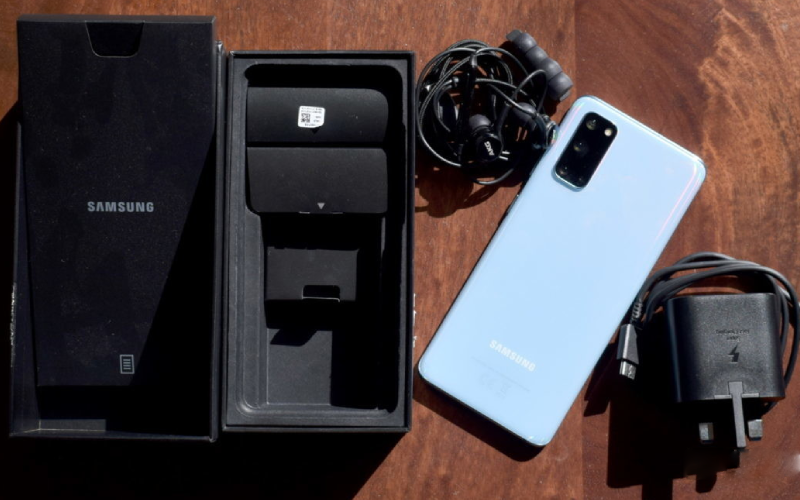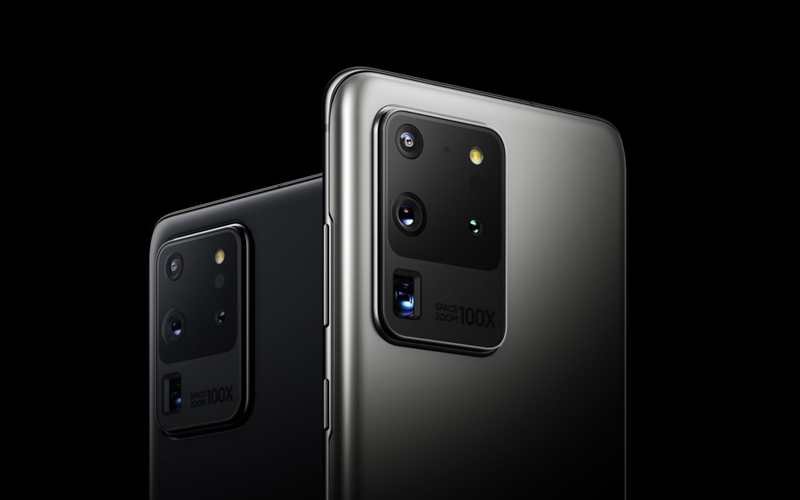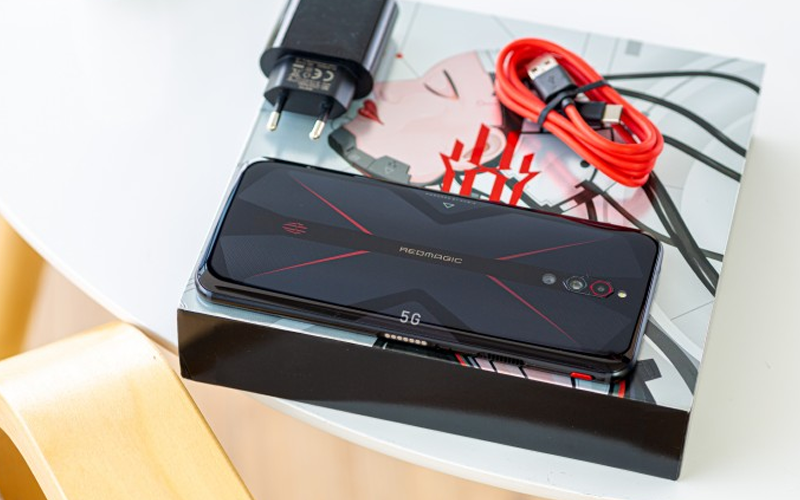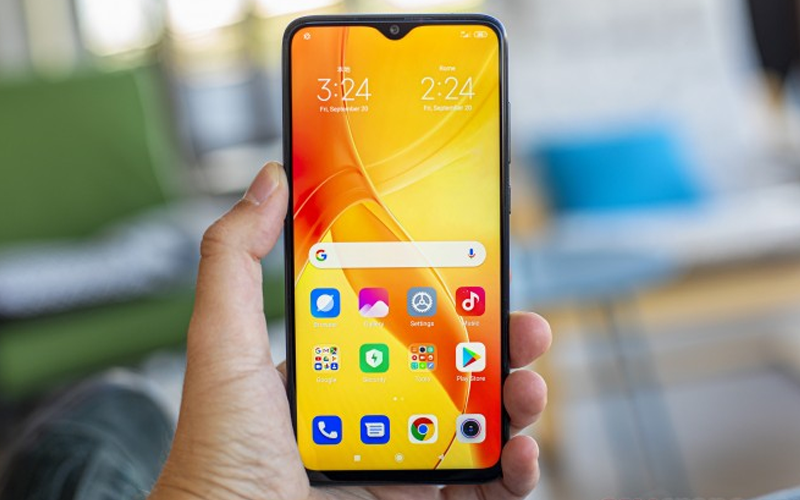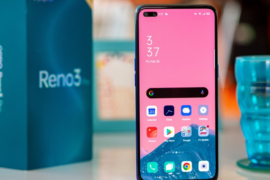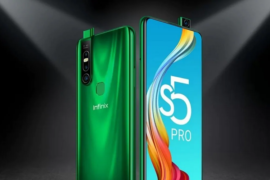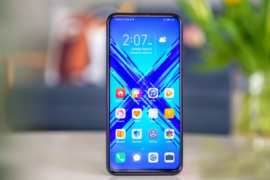SPECIFICATIONS
- Display6.7 inches
- Rear Camera12 Mp/64 MP/12 MP/0.3 MP
- Front Camera10 MP
- ProcessorExynos 990
- Resolution1440 x 3200
- RAM8GB
- Operating SystemAndroid 10
- Storage128 GB
- Battery4500mAh
- WaterproofYes
- Dual SimYes
- Quick ChargingYes
DESIGN
The Galaxy S20 family’s structure story is one of cleaning and tweaking. Once Samsung completely chose glass and aluminum with the S6, it turned into a matter of refinement and emphasis on various presentation and back board bends, outline thickness and finish, button situation, the part. The S20s at that point ought to approach flawlessness.
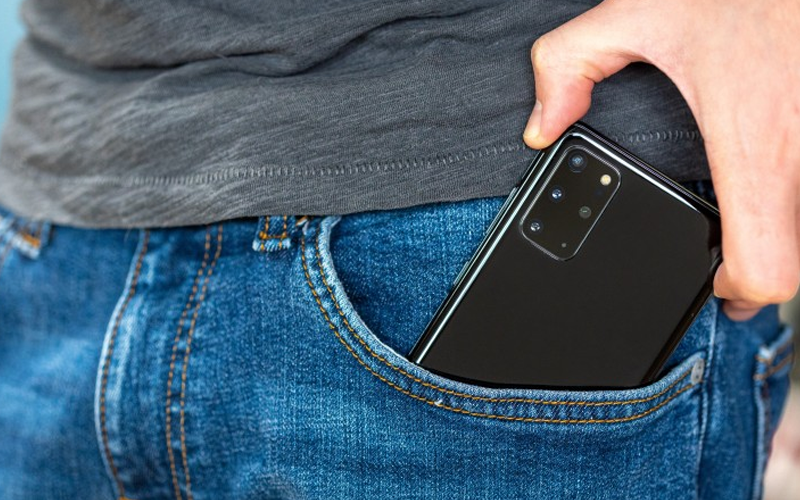
Presently, a case could be made that the regularly thinning bezels are hindering to dealing with, with the practically nonexistent jawline leaving no space to rest a thumb. In case you’re of that general inclination, you’ll most likely welcome that this age has the subtlest of show bends we’ve seen on a Samsung leader in some time – show bends have commonly been a thistle in the side of progressively moderate society who lean toward past times worth remembering.
What we’re attempting to get at, is that Samsung’s nailed the S20’s structure to be nearer to all around affable than progressively extraordinary endeavors of the past. Bezelless, without being excessively stunning, who could want anything more?
Having said that, we question you’d ready to simply slap any glass screen defender on your Galaxy S20+ – there’s still enough of slant to make it a dubious undertaking. A minor silver fixing is that the telephone accompanies a pre-applied plastic sheet, however you’ll develop to detest it immediately on the off chance that you select the motion routes. Each swipe in from the sides to return will mean scratching your thumb – a delicate scratch, obviously, yet horrendous. Call us unimportant, yet we’re trying to say it the manner in which we’re feeling it. You can generally evacuate the defender and put your trust in the Gorilla Glass 6, that is what it’s there for.
There’s another sheet of that on the back as well – the two sides of the telephone are ensured by Corning’s most recent. The innards ought to be sheltered from hurt also – there’s an IP68 rating on the Galaxy S20+ to confirm that.
The Galaxy S20+ we have for survey is in the Cosmic Black shading plan. We’d regularly abstain from exhausting dark paint jobs for our own telephones, yet this colorway specifically causes the S20+’s camera gathering to vanish and that is the main moderately unattractive piece about the in any case attractive handset.
If it’s all the same to you the camera knock’s dark plaque sticking out, you’ll have a decision of four additional hues for your S20+ – Cosmic Gray, Cloud Blue, Cloud White, and Aura Red. It’s a greatly improved determination than the Ultra’s two shades of weariness (Cosmic Gray, Cosmic Black) however all things considered, not all alternatives will be accessible over all business sectors.
Psyche you, that camera group isn’t too terrible to take a gander at, positively not the mass that the S20 Ultra has. Samsung’s done what it could to make it as balanced as could be expected under the circumstances, fitting the three real cameras on the left and the blaze and ToF pair on the right. A mic likewise needed to go in there.
It’s one of three mics. Taking a gander at the highest point of the telephone, we see another mic, way off from the card space, so you don’t jab it coincidentally attempting to get your cards out. The card plate will hold a nano-SIM and a microSD card on single-SIM models, while double SIM adaptation will have a mutual space for the second SIM and the microSD – not perfect, yet that is the manner by which it’s generally been.
On the base of the telephone, we locate the essential mic for voice calls (3 out of 3). The USB-C port is focused here, with the principle amplifier to the contrary side of the mic.
Another amplifier is up top on the front – according to Samsung’s plan since the S9, the earpiece likewise fills in as a second channel for amplifier purposes.
Where the Plus in the Galaxy S20+ has the best noteworthiness is physical size. It estimates 161.9×73.7×7.8mm – a full centimeter taller than the vanilla S20. It is to some degree closer to the Ultra in this regard, one being 5mm even taller. The S20+ manages to keep a thin waistline – the S20 is, actually, a small amount of a mil thicker, which goes up to a full millimeter when contrasting S20+ with S20 Ultra.
What’s reasonable is the nearest contender, the iPhone 11 Pro Max, is some 4mm shorter than the Galaxy S20+ but on the other hand is more extensive by so much. The iPhone is likewise an incredible piece with its 226 grams, in reality more than even the Ultra. In the meantime, the S20+ gauges an entirely sensible 186g, even not exactly the iPhone 11 Pro non-Max, and it’s lighter than the Galaxy Note 10 by 10g, however it’s as yet an expansion over a year ago’s model.
We truly don’t worry about it, however. It’s not even close to what you’d call a powerful telephone, especially when you consider the battery limit you’re getting. The 7.8mm thickness scarcely makes a lump in a pocket and makes for an extremely agreeable hold. It is tall, that much we’ll give it, however that is the place the pattern is going.
DISPLAY
The Galaxy S20+ has a 6.7-inch show – closer to the Ultra’s 6.9 crawls than it is to the vanilla S20’s 6.2. In every other regard, it’s indistinguishable from those two. You, despite everything, get the 120Hz invigorate rate close to the 240Hz touch testing, and the local goal of the board is 1440x3200px in a 20:9 angle proportion.
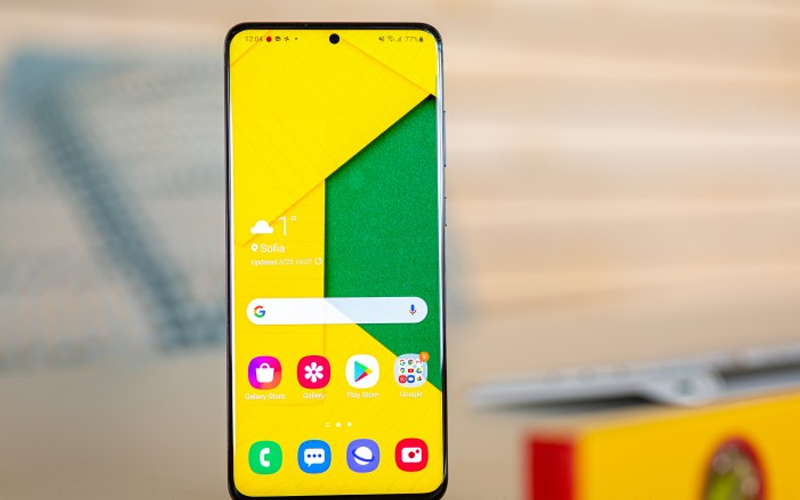
Similar to the case on the S20 and the S20 Ultra, the S20+ constrains you to pick between the high invigorate rate and the most extreme goals – 120Hz is just accessible up to 1080p, while 1440p tops the revive rate at 60fps. Confronted with this situation, we’re inclining towards the 120Hz/1080p combo.
The outcomes for brilliance we escaped the Galaxy S20+ are generally in accordance with the numbers posted by its stablemates, if somewhat lower. While changing the slider physically, we estimated a limit of 379nits, contrasted with about 400nits on the other two. The 797nits in Adaptive mode with the showcase under direct light are insignificantly lower than on the S20 and a full 100nits lower than the Ultra.
Having said that, the S20+ has one brilliant presentation – it siphons out 200nits more than the OnePlus 7T Pro and 100nits more than the Huawei Mate 30 Pro, with a Pixel 4 XL a long way behind. All things being equal, the iPhone 11 Pro Max oversees two dozen nits more, while the Find X2 Pro with its 871nits in our test is nearer to the Ultra.
The S20+ embraces the two-mode shading proliferation plot Samsung’s been utilizing of late. In Natural mode, we estimated a normal DeltaE of 1.7 with a 3.1 most extreme for our arrangement of sRGB test samples – astounding precision. The Vivid mode offers a wide range and can recreate the DCI-P3 shading space with relative precision – a normal DeltaE of 3.4 for the P3 test patterns, however the whites are somewhat pale blue (DeltaE of 4). You can fix this by knocking the Cool-to-Warm slider a score to one side, and you’ll get close to consummate whites (DeltaE of 1) and marginally better generally speaking precision (normal DeltaE of 2.8).
The numbers aside, Vivid mode conveys the recognizable AMOLED punch we know and love, while Natural looks somewhat dead in correlation (however completely alright in disconnection). Clear is the mode out of the case.
The shading modes have a couple of suggestions on most extreme splendor. While it is practically indistinguishable in Adaptive mode (797nits in Vivid, 792 in Natural), the Natural mode’s most extreme in manual activity is 340nits instead of the 379 in Vivid – an increasingly observable contrast. We checked ,and the revive rate and show goals setting had no impact of shading version or most extreme brilliance.
True to form given the ‘Dynamic’ in the board’s marking, the presentation on the Galaxy S20+ bolsters HDR10+, the sovereignty free powerful metadata HDR position that Samsung pushes close to DolbyVision. At the hour of composing, both Netflix, Amazon Prime Video and YouTube will joyfully serve you HDR content.
PERFORMANCE
As is typically the situation with Samsung’s best in class models, and as we went over in our S20 survey, the Galaxy S20+ exists in two fundamental variations with regards to the chipset, and each market gets just one of the two. Choice one packs a Snapdragon 865 SoC, while alternative two uses Samsung’s own Exynos 990 – our own is the last mentioned. Normally, China and North America get the Snapdragon, the rest of the world is Exynos, however check with your bearer or retailer in case you’re specific like that.

Both chipsets are fabricated on a 7nm+ procedure, and both element an outside modem (not so much a component, is it?), with hypothetically negative consequences for effectiveness. At that point there’s the matter of the 5G versus non-5G kinds of the S20+, and our survey unit has none of it. In other words, it uses a similar modem as the 5G adaptations, short of the cumbersome 5G radio wire gatherings, we’ve been persuaded. Regardless, none of this will have a universe of an effect with regards to execution. Increasingly substantial contrasts are conceivable between the two chipsets, however with just one of them around here as of now, we’ll have to hold up before we can look at.
In our testing, the Galaxy S20+ was somewhat behind the S20 and S20 Ultra in many benchmarks. We’re talking single-digit rate contrasts, yet reliably so. Every one of the three S20s were Exynos ones, so it isn’t so much that. Furthermore, talking about Exynos versus Snapdragon, the one Snapdragon 865 handset we’ve tried, the Oppo Find X2 Pro, fundamentally outflanks the Galaxy S20+ under multi-center CPU loads, creeps ahead in single-center execution and is in any event as incredible with regards to GPU-extraordinary applications, regularly in any event, beating the Galaxies.
BATTERY
The Galaxy S20+ is controlled by a 4,500mAh battery, halfway between the S20’s 4,000mAh powerpack and the Ultra’s 5,000mAh unit. While the S20+ unit we have for audit is the 4G-just form, its modem is as yet outer to the chipset for what it’s worth on the 5G variation, and the expanded battery utilization from this, coupled the high invigorate rate show implies that 2020 Samsung leaders won’t top up any battery life graphs.
As we did on the S20 and S20 Ultra, we tried the S20+ in the two modes that we felt boded well. Number one is with the showcase set at 120Hz (and therefore goals at 1080p), while the other alternative is at greatest 1440p goals and 60Hz. We watched comparable execution on the S20+ as we did on the Ultra, with the vanilla S20 going amiss somehow or another, which we’ll examine whenever we find the opportunity.
At 120Hz/1080p, we timed 11 hours of web perusing and 13:30h of video playback on the S20+ – generally thirty minutes more in each undertaking when contrasted with the Ultra. The bit of leeway stayed in 60Hz/1440p mode, where we timed 13:00h on the S20+ in web perusing and 17:09h of circling recordings (12:08h and 16:35h were the Ultra’s separate occasions). We additionally timed 21 hours of conceivable voice approaches to a solitary charge of the S20+.
The general Endurance appraisals of the Galaxy S20+ turned out indistinguishable from the Ultra’s – 87 hours with the showcase at 120Hz/1080p and 97 hours when set at 60Hz/1440p.
Accusing the S20+ of the packaged 25W connector (Power Delivery with PPS) takes a little ways from level to full and 30 minutes into the procedure you’d be taking a gander at 62%. Just the Ultra backings Samsung’s 45-watt charging, which doesn’t make all that large of a distinction, all things considered, charging speed, so the absence of such help on the S20+ isn’t generally an issue.
All the more significantly, the S20+ underpins remote charging, up to 15W with good chargers. It will likewise charge different gadgets itself – Samsung calls the element Wireless PowerShare, and it works at up to 9 watts. A perfect use case would be for traveling with as little luggage as possible with simply the telephone’s charger and utilizing the handset to control things like remote earbuds or a smartwatch.
CAMERA
The Galaxy S20+ gets the camera arrangement of the S20, with a contort – it includes the Ultra’s ToF pair with 0.3 million-dab profundity recognition ability, thus its DepthVision marketing. The real camera exhibit comprises two 12MP snappers and a 64MP one.
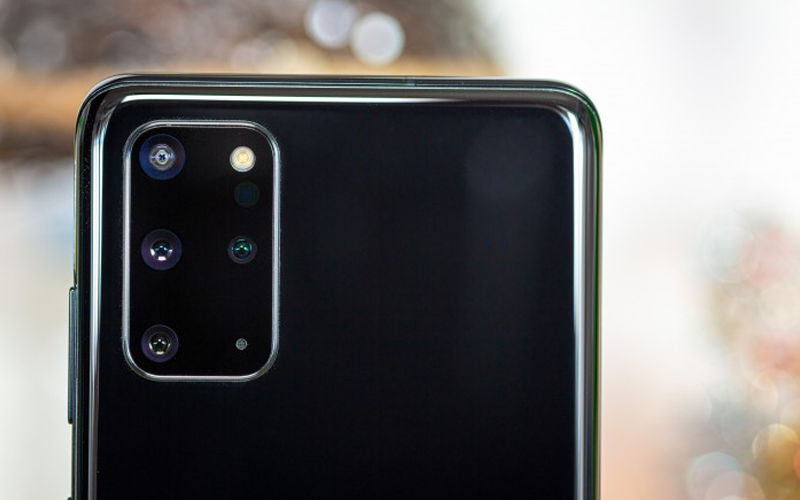
Taking a gander at this new camera arrangement on a surface level doesn’t generally energize such a lot. Contrasting it with Samsung’s last-gen setup in something like the Galaxy Note10, a knock in the ‘fax’ goals stands out, yet in addition the lessening in the megapixel mean the ultrawide and the nonattendance of Samsung’s mark double gap tech for the 12MP fundamental snapper.
Obviously, we have to look somewhat more profound than that to see the overhauls in this new age camera. Beginning with the primary Samsung S5K2LD 12MP sensor, behind a f/1.8 gap focal point. What you get with this module are overall quite huge 1.8µm pixels, signifying a 1/1.76″ sensor. A serious nice update in the course of the last age 1.4µm pixels and type 1/2.55″ sensor. What’s more, regarding different additional items, this new SAMSUNG ISOCELL sensor despite everything has Dual Pixel PDAF tech, while the focal point is likewise settled.
The 12MP Samsung S5K2LA ultrawide camera (focal point gap is f/2.2) has likewise developed in size for this age of Samsung leaders. A pixel size of 1.4µm doesn’t sound close to as noteworthy as the one on the primary camera, however contrasted with the Galaxy Note10 and its 1.0µm, it despite everything comprises a major update. Much the same as a year ago, the ultrawide is the S20’s first decision with regards to catching it’s fairly amazing Super Steady video. In any case, more on that later.
At long last proceeding onward to what is likely the most fascinating new expansion to the S20 and one previously striking-up discussion left and right because of Samsung’s showcasing, just as a touch of disarray. The 64MP Samsung Bright S5KGW2 sensor with its 1/1.72″ size and 0.8µm pixels is the equipment behind Samsung’s “3x half breed optical zoom” showcasing for the S20. Sounds adequate on a superficial level, however for reasons unknown, the genuine optical zoom level the focal point gives is for all intents and purposes inconsequential, contrasted with the principle 12MP camera.
This implies Samsung is utilizing editing, joined with some propelled handling calculations, to pull off its “half and half optical zoom”, up to a great sounding 30x amplification. Utilizing “optical” in the name is henceforth in fact right, yet naturally somewhat misleading. All things considered, similar to the truism goes – on the off chance that it works, it isn’t idiotic. Along these lines, we certainly moved toward the zooming abilities on the S20 and S20+ with a receptive outlook, assuming the best about the tech in our tests. Furthermore, the Samsung Bright S5KGW2 sounds fascinating with its OIS.
The Galaxy S20+ conveys satisfying pictures in sunlight, that ought to have been self-evident. The primary camera has capable handling, Auto HDR is solid if somewhat loose regarding pulling up the shadows, and hues are satisfyingly distinctive without going over the top.
The ultrawide point camera isn’t exactly up there as far according to pixel detail (none of the ultrawides available appear to be) yet at the same time catches enough. Hues are a pleasant counterpart for the primary cam and dynamic range is acceptable, if not exactly up there with the 1x module.
The fax cam that isn’t. The Galaxy S20+’s zoom camera that optically offers simply 1.07x amplification over the primary unit makes appropriately amazing efforts in its ostensible 64MP goals given a lot of light to work with.
At 2x and 3x amplification you can depend on pleasantly point by point pictures. In the event that a telephone had a real 2x or 3x fax camera and put out these photographs, you’d be completely content with those. Samsung’s methodology might be unique, however the final product is what is important.
The S20+’s magnificent presentation proceeds into low-light shooting. Dynamic range is as of now extraordinary even before turning to Night mode, detail is great and commotion is held sensibly under control.
The impacts of the Night mode preparation are especially amazing in ultrawide point pictures, where dull scenes are regularly underexposed in Photo mode, yet become altogether better in Night mode.
Live spotlight mode on the Galaxy S20+ profits by the consideration of a ToF module letting it all more accurately measure profundity data in the scene than what the S20 can. Two zoom levels are accessible, the wide one being caught by the fundamental cam, while the zoomed-in mode originates from a yield out of the 64MP shooter. Both offer capable subject recognition and representations glance great out of the S20+.
One quirk we found because of the way that shooting these was a one individual undertaking, was that utilizing the self clock locks center at the time you press the shade button, and not at the hour of snapping the photo. It was an experimentation methodology with centering at the palm of one hand, loosened up to where the subject (himself likewise the picture taker) would be 5 seconds after the fact. Samsung could most likely reconsider the rationale behind this.
Live center mode is similarly appropriate to non-human subject when you need to accentuate your subject and make it stand apart from the foundation. We figure the S20+ did an excellent work even with genuinely complex subjects.
Selfies out of the S20+ ought to be a similar you’d get from the S20. A likewise looking spec sheet made them accept that the equipment is equivalent to on the Note10s from a year ago, yet looking into the sensor assignments demonstrated something else.
Regardless, the pictures look magnificent and are pleasantly definite when the light is correct. In dimmer conditions, the telephone organizes detail over commotion decrease which we see as an invite approach. We counted more than the standard number of misfocused shots in darker light. Hues do have a somewhat quieted look in contrast with the essential cam’s yield, however we’d be content with the selfies taken in disengagement.
SOFTWARE
Samsung may not be incredible at naming things, yet OneUI 2.1 itself is truly alright. Samsung’s most recent emphasis of its in-house Android overlay that we find on the Galaxy S20+ accompanies scarcely observable changes over the One UI 2.0 we’ve just observed with the Android 10 reports on various telephones just as out of the container on ongoing new discharges. It’s likewise indistinguishable from the product on the S20 Ultra and S20 legitimate.
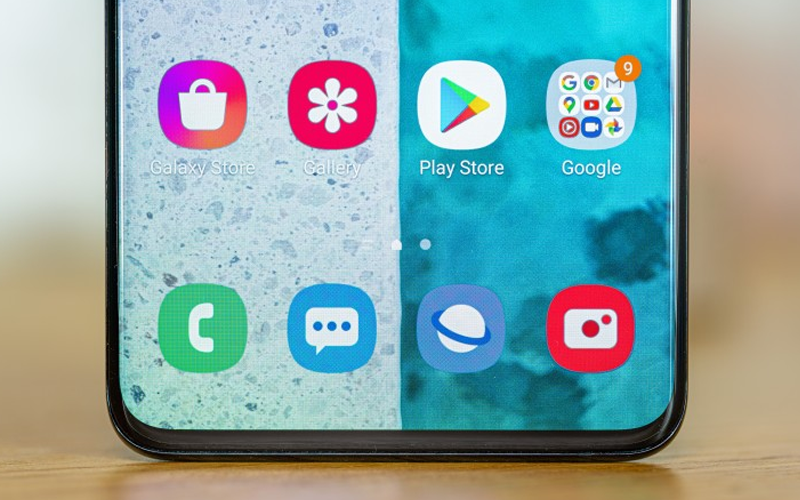
The most recent patterns in the UI can now all be found on this Galaxy. For one, that implies a framework wide dim mode that skins the UI as well as triggers the applications’ particular dim subjects (on the off chance that they have them) – on account of Android 10. What’s going on in v2.1 is that the setting is at the extreme top of the presentation menu, made even more noticeable with an obvious sign as well.
The most recent OS got a legitimate signal route, and the S20+ has two or three distinct takes on that – we settled on the more up to date strategy where a swipe-in from the sides goes about as ‘Back’ and a swipe-up from the base takes you Home. It’s likely worth referencing we found the packaged case’s base lip to get a little in the method of the upward swipes, thus did the silicone sides when endeavoring to return. We despite everything welcome the security, however. Gracious, in case you’re outdated like that, the exemplary nav bar stays an alternative, and that is the thing that the telephone has out of the crate.
Biometric security on the S20+ comes in one of two shapes – unique mark verification and facial acknowledgment. We’ve rehashed our shifted understanding to the ultrasonic unique mark peruser on the Samsung leaders generally and the S20+ isn’t up there with the best in the business as far as speed of opening or unwavering quality.
Should I Buy It?
Samsung’s 2020 lead program appears to be anything but difficult to make sense of. On the off chance that you need a definitive telephone and cash is no item, you go for the Galaxy S20 Ultra. In case you’re hoping to go through a progressively reasonable measure of cash and you can live with an amazing camera, yet knowing there’s a superior one, the Galaxy S20 is your telephone. The S20+ doesn’t seem to fit into any of these direct suggestions.
After some additional thought, the Plus can in any case put forth a convincing defense for itself against the S20. The altogether bigger showcase might be sufficient for the correct client, while bearer appropriations could recoil the value distinction from the ostensible $200/€100 to something all the more engaging. What’s more, as is generally the situation, in case you’re not in a rush, you could sit tight for a month or two, and the costs are probably going to descend a bit, maybe the Plus more so than the non-Plus.
